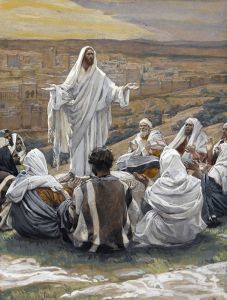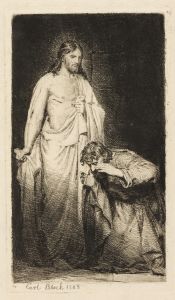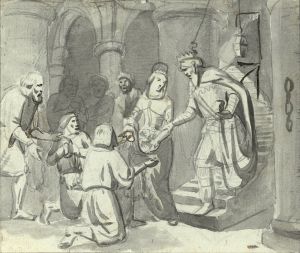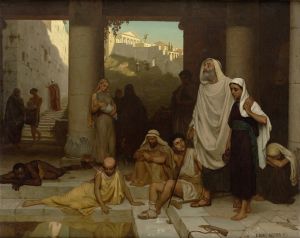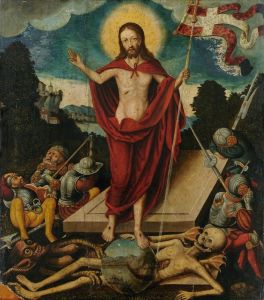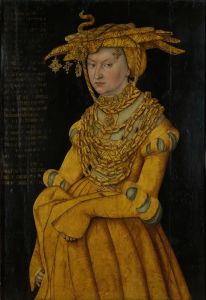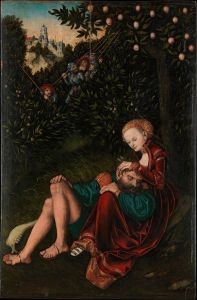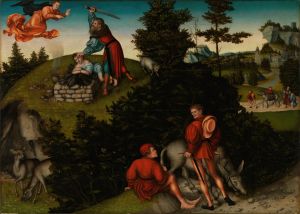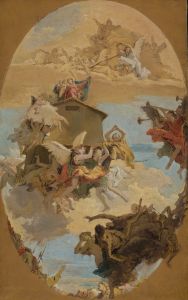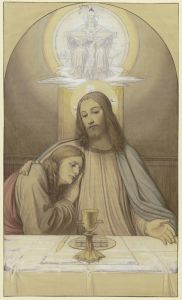
The miracle of the five loaves and two fish
A hand-painted replica of Lucas Cranach the Elder’s masterpiece The miracle of the five loaves and two fish, meticulously crafted by professional artists to capture the true essence of the original. Each piece is created with museum-quality canvas and rare mineral pigments, carefully painted by experienced artists with delicate brushstrokes and rich, layered colors to perfectly recreate the texture of the original artwork. Unlike machine-printed reproductions, this hand-painted version brings the painting to life, infused with the artist’s emotions and skill in every stroke. Whether for personal collection or home decoration, it instantly elevates the artistic atmosphere of any space.
Lucas Cranach the Elder, a prominent German Renaissance painter, is known for his significant contributions to the art world during the 16th century. Among his many works, "The Miracle of the Five Loaves and Two Fish" is a notable painting that depicts a biblical scene from the New Testament. This artwork illustrates the miracle performed by Jesus Christ, as described in the Gospels, where he feeds a multitude of people with only five loaves of bread and two fish.
Cranach was born in 1472 in Kronach, Germany, and became a leading figure in the Northern Renaissance. He was renowned for his portraits, religious subjects, and mythological scenes. His style is characterized by its clarity, attention to detail, and vibrant use of color. Cranach's work often reflects the religious and cultural shifts of his time, particularly the Reformation, which had a profound impact on art and society in Germany.
"The Miracle of the Five Loaves and Two Fish" is a testament to Cranach's skill in religious storytelling through art. The painting captures the moment when Jesus, surrounded by his disciples and a large crowd, performs the miracle. The composition of the painting is carefully arranged to draw the viewer's eye towards the central figure of Jesus, who is depicted with a serene and compassionate expression. The crowd is portrayed with a variety of expressions, highlighting the awe and wonder of the miracle.
Cranach's use of color and light in this painting is particularly noteworthy. The warm tones and soft lighting create a sense of harmony and peace, which enhances the spiritual significance of the scene. The figures are rendered with meticulous detail, showcasing Cranach's mastery of anatomy and his ability to convey emotion through facial expressions and body language.
This painting, like many of Cranach's religious works, was likely commissioned by a church or a wealthy patron. During the Renaissance, religious art played a crucial role in both public and private devotion, serving as a visual representation of biblical stories and theological concepts. Cranach's ability to convey complex religious themes in an accessible and engaging manner made his work highly sought after.
Cranach's workshop was one of the most prolific of its time, producing numerous paintings, prints, and altarpieces. His sons, particularly Lucas Cranach the Younger, continued his artistic legacy, ensuring that the Cranach name remained influential in the art world long after his death in 1553.
While specific details about the provenance and current location of "The Miracle of the Five Loaves and Two Fish" may not be well-documented, the painting remains an important example of Cranach's religious art. It reflects the broader context of the Northern Renaissance, where artists sought to balance traditional religious themes with the emerging humanist ideals of the period.
In summary, Lucas Cranach the Elder's "The Miracle of the Five Loaves and Two Fish" is a significant work that exemplifies his skill in religious narrative painting. Through his use of composition, color, and detail, Cranach brings to life a pivotal moment from the New Testament, capturing the essence of the miracle and its impact on those who witnessed it.






